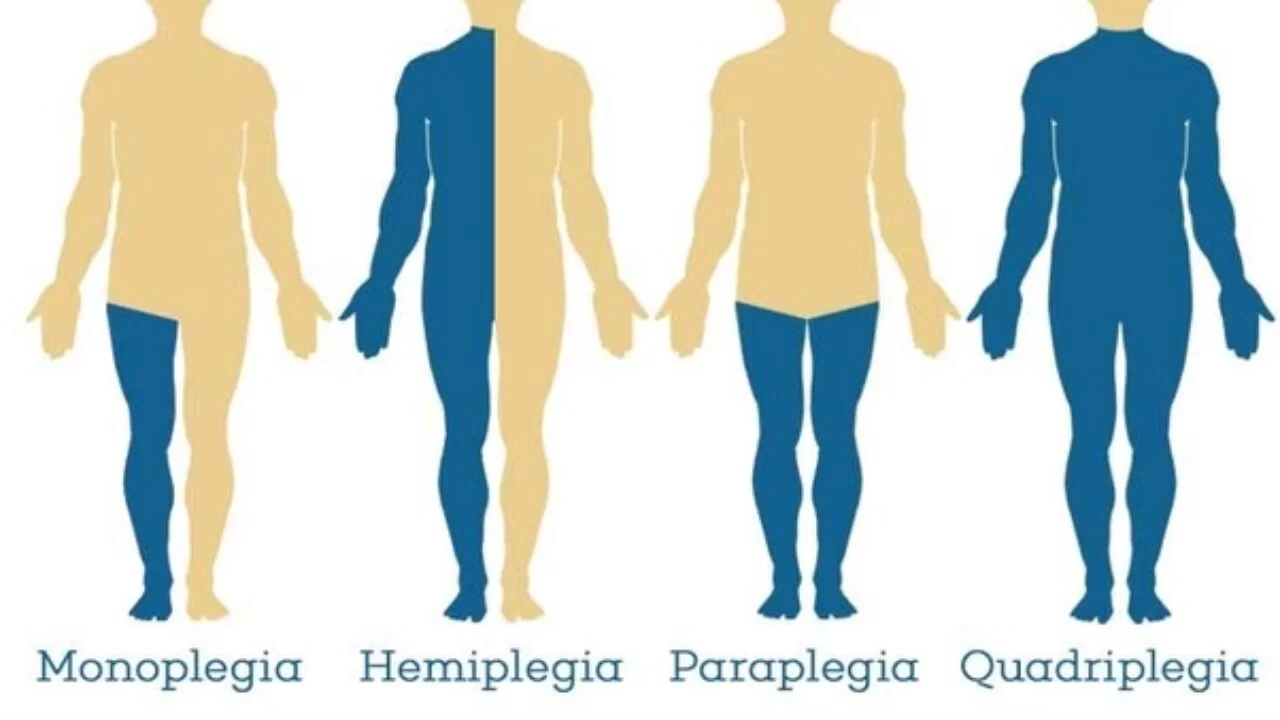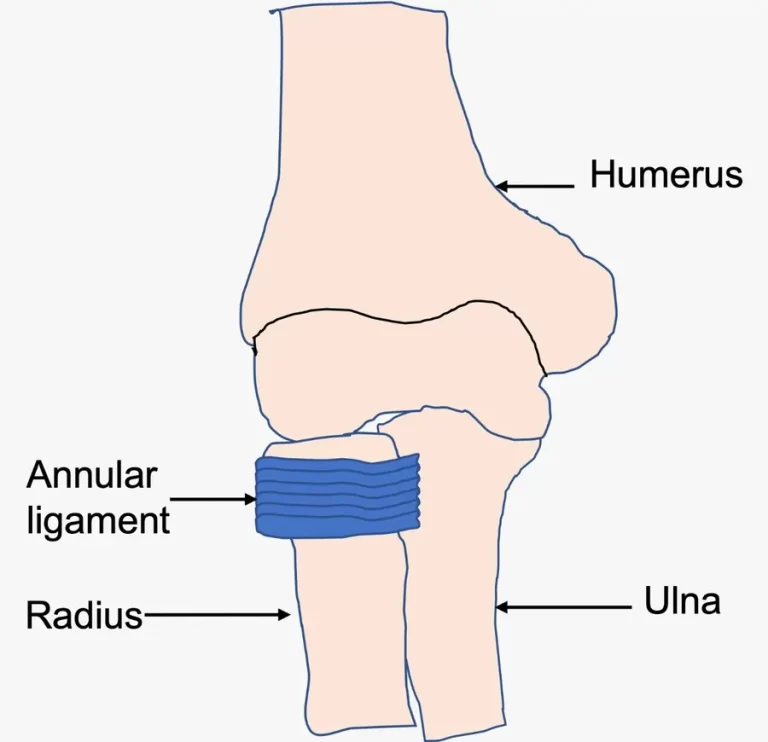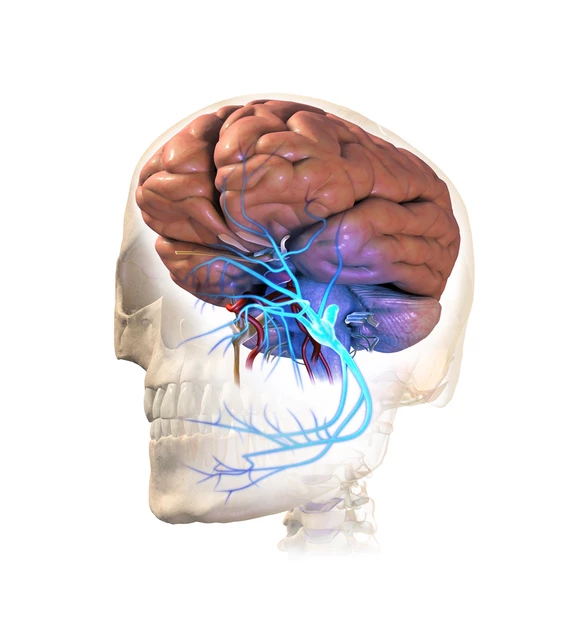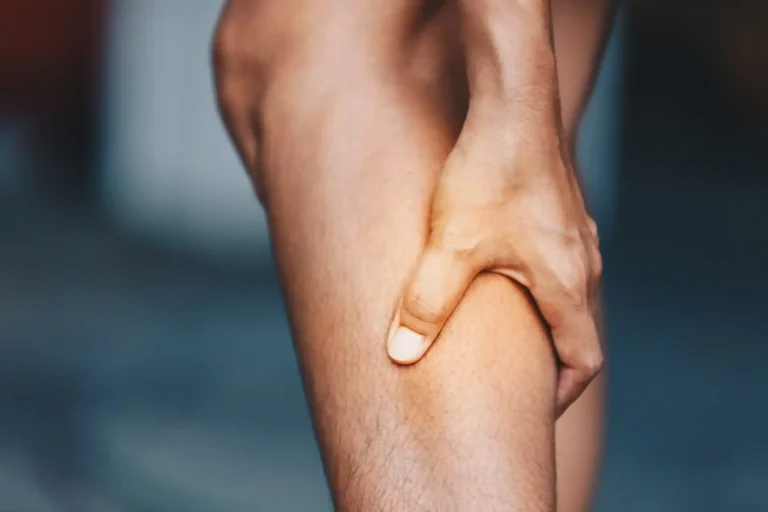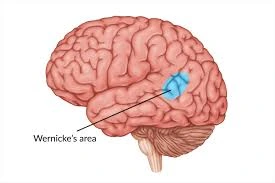Paraplegia
The term “paraplegia” describes paralysis that affects the lower limbs. The paralysis symptom that primarily affects your legs is called paraplegia, though it can also occasionally affect your lower body and certain arm functions.
This typically results from damage to the neurological system, particularly the spinal cord, but it can also occur from several illnesses and disorders. It might be the outcome of a long-term illness or an accident.
Individuals who are paraplegic may experience difficulties with their mobility and may need to use a wheelchair.
On the other hand, there are long-term therapeutic alternatives available to aid paraplegics with their symptoms and problems. In addition to going into the many causes and therapies of paraplegia, this article will define the condition.
What Is Paraplegia?
- Paraplegia is a type of paralysis that affects the movement of the lower limbs. It happens when the part of your nerve system that regulates your lower body is affected by a disease or trauma. Your feet, legs, and stomach muscles may feel stiff and unresponsive.
- This paraplegia may only affect one leg in certain situations. We refer to this as partial paraplegia. A particular type of paralysis that affects your legs is called paraplegia, which is defined as the inability to consciously regulate or move your muscles.
- Although paraplegia is typically a symptom, it can occasionally be a distinct ailment in and of itself.
Additionally, paraplegia can occur in two primary ways: total and incomplete. - Complete injury: This indicates a complete loss of function, including movement and feeling. Additionally, your body cannot control autonomic processes like bladder and bowel control that depend on the transmission of signals from your spinal cord.
- Partial injury: Injured to a partial degree indicates a loss of function. Though usually not as firmly as you could before the injury, you can still feel or move bodily components below the damage.
Pathophysiology
Paraplegia is nearly typically caused by brain or spinal cord injury. Most instances are caused by spinal cord injuries to the thoracic, lumbar, or sacral spinal cords. When these injuries occur, messages cannot move to and from the lower portions of the body, and the body is unable to transmit signals up the spinal cord to the brain.
Thus, paraplegics not only struggle with mobility below the level of damage, but they also suffer from significant sensory loss. This sensory loss might range from tingling or diminished feeling below the level of damage to a total inability to feel anything below the lesion.
How does the location of an issue influence paraplegia?
People suffering from paraplegia exhibit varying symptoms depending on where the damage is located in their spine. Paraplegia often affects your legs, but it can also impact your abdominal muscles, making it harder to cough. It can also impair your chest muscles, making it harder to take deep breaths.
There are several portions to your spine. Each segment has numerous vertebrae (singular: vertebra). Your vertebrae are interconnecting bone pieces that form your backbone and protect the spinal cord.
Paraplegia can result from damage in any of the following sections:
- The thoracic spine (pronounced “tho-rass-ick”) is located in the upper back. It contains 12 vertebrae and 12 spinal nerves.
- Lumbar spine (L): This is the lower back. There are five spinal vertebrae and five nerves in it. Although the spinal cord stops at the first lumbar vertebrae, some spinal neurons continue downhill and escape between the vertebrae below.
- Sacral spine (S): These vertebrae connect the spine and pelvis (hip bones). The sacrum has five vertebrae and nerves.
Healthcare practitioners utilize a letter-number combination to describe spinal portions and linked spinal nerves. For example, T1 is the spinal neuron that connects the first and second thoracic vertebrae.
The effects of paraplegia are as follows:
Injury between the spinal nerves T1 and T6 results in full paraplegia. The hips, legs, and abdominal muscles are all paralyzed and devoid of sensation. This also leads to loss of bladder and bowel control. Injury at this level might cause coughing and difficulty breathing.
- T7-T12: Complete paraplegia as described above, although chest muscles are unaffected.
- L1 to L2: Complete paraplegia as described above, however, chest and abdominal muscles remain unaffected. You still require a wheelchair for movement, and you may lack bowel and bladder control.
- L3 to S5: Incomplete paraplegia is increasingly prevalent as an injury progresses down the spine. At this stage, you can often walk with or without braces or a walker. However, bowel motions and bladder function may be compromised.
Peripheral nerve issues
Paraplegia can result from abnormalities with your peripheral nerves, which are the nerves that radiate from your spinal cord. These are typically caused by illnesses and disorders that affect numerous nerves at once (polyneuropathies), such as Guillain-Barré syndrome or diabetes-related nerve damage (neuropathy).
Types Of Paraplegia
Paraplegia is classified according to its symptoms and severity. Some frequent kinds of paraplegia are listed below.
Complete paraplegia.
- Complete paraplegia is defined as the loss of all motor and sensory functions in the lower body as a result of spinal cord injury or illness. This causes a full inability to move or sense sensations below the level of the damage, necessitating mobility aids and adaptive approaches for everyday tasks. It can frequently result in loss of bladder or bowel control.
Partial Paraplegia
- Partial paralysis is caused by nerve damage or injury, resulting in restricted muscular function and sensory loss. Unlike full paralysis, some movement and feeling remain but decrease. For example, one leg may be completely paralyzed while the other has a limited range of motion. Rehabilitation and treatments are frequently employed to restore or enhance functionality in the damaged regions.
Traumatic paralysis
Traumatic paraplegia occurs when a severe injury, such as spinal cord damage caused by accidents, falls, or sports-related occurrences paralyzes the lower body. This disorder interrupts nerve communication between the brain and the lower limbs, resulting in loss of feeling and motor control. Rehabilitation, medical intervention, and adaptive techniques are intended to mitigate the impacts and improve the individual’s quality of life.
Non-traumatic paraplegia
- Non-traumatic Paraplegia is defined as lower-body paralysis that is not caused by physical injury. It may be caused by spinal tumors, infections, autoimmune illnesses, or congenital anomalies. Nerve signal interruption leads to loss of sensation and motor function. The treatment consists of treating the underlying cause, as well as rehabilitation and assistive measures to improve everyday life and movement.
Spastic Paraplegia.
- Spastic paraplegia is a neurological condition characterized by muscular stiffness and weakness, primarily in the legs. It is commonly caused by genetic abnormalities that affect nerve cells that govern movement. This disease causes difficulties in walking and coordinating. Therapies are used to reduce symptoms and improve functioning capacities.
Congenital paraplegia.
- Congenital paraplegia is an uncommon congenital syndrome characterized by partial or total lower-body paralysis. Genetic mutations, prenatal circumstances, and spinal cord developmental difficulties can all contribute to this condition. Medical intervention and therapy assist affected people in controlling mobility issues while increasing their independence and quality of life.
Other forms of paralysis
There are various forms of paralysis. Healthcare specialists may distinguish between the various varieties based on their intensity, location, or muscular tension.
For example, different kinds of paralysis depending on their location include:
- Monoplegia affects a single location, such as an arm.
- Hemiplegia affects one side of the body, such as the left arm and leg.
- Tetraplegia affects both arms and legs.
Causes of the Paraplagia
Paraplegia is typically caused by a variety of factors.
Spinal Cord Injury: Trauma from accidents, falls, or sports can injure the spinal cord and cause paralysis.
Spinal Tumours: Growths within the spinal canal can compress the cord, resulting in paralysis.
Multiple Sclerosis (MS): This autoimmune illness can damage the spinal cord’s myelin coating, interrupting nerve transmission.
Spinal Infections: Infections such as meningitis or abscesses can harm spinal cord tissues.
Congenital Conditions: Congenital impairments or genetic abnormalities can cause improper spinal cord development.
Vascular Issues: Blood vessel issues, such as spinal cord strokes, can result in paralysis.
Neurological diseases such as transverse myelitis or ALS can cause paraplegia.
Symptoms of the Paraplagia
The symptoms of paraplegia vary depending on the individual and the severity of the paralysis. Some symptoms will appear immediately, while others may develop gradually. Symptoms include:
- The patient loses mobility or muscular control in the legs, feet, toes, or trunk.
- The patient loses feeling in the legs, feet, toes, or trunk.
- Tingling in the legs, feet, toes, and trunk may also be felt.
- Urinary and bowel incontinence.
- Changes in sexual function, sensitivity, and fertility.
- Exaggerated reflex actions or spasms.
- Damage to your spinal cord’s nerve fibers causes pain or an extreme stinging sensation.
- Difficulty breathing, coughing, or cleaning your lungs.
Emergency indications include :
- Severe back pain or pressure in the neck, head, or back.
- any part of your body experiencing paralysis, weakness, or incoordination.
- Your hands, fingers, feet, or toes may become numb, tingly, or lose sensation.
- Loss of bladder and bowel control.
- Problems with balance and walking.
- Following an injury, one’s breathing becomes impaired.
- An abnormally positioned or twisted neck or spine.
Risk Factors for Paraplegia
While paraplegia is primarily caused by an illness or an unintentional injury, it can happen to anybody. However, several risk factors enhance your chances of becoming paraplegic. It should be noted that a risk factor is not a cause of paraplegia; rather, it is something that is prevalent among paraplegics and may contribute to a paraplegia-causing accident or disease.
Gender
- According to the National Spinal Cord Injury Statistical Centre (NSCISC), “78% of all new SCI cases are male.” Because SCI is a prevalent cause of paraplegia, males are more likely to become paralyzed than women.
Age
- According to NCISC data, the average age of a person with a spinal cord injury is 43, up from 29 a few decades ago. Seniors with osteoporosis and other bone-related diseases are more prone to get a serious SCI following a fall or other accident.
Occupation
- Certain occupations and activities increase the risk of serious head or spinal column injuries, which can lead to paraplegia. Examples include law enforcement, construction, boxing, football, diving, and ice hockey.
Familial Health History
Certain genetic nerve illnesses and other ailments can contribute to brain and spinal traumas, increasing the likelihood of paraplegia.
There are several other risk factors for paraplegia including:
- Participating in high-impact sports like football or wrestling.
- Participate in sports like gymnastics, diving, or surfing.
- A history of cancer.
- Having a family history of a nervous system disorder
Diagnosis of the Paraplagia
- A doctor will evaluate the patient’s symptoms and medical history to make a diagnosis of paraplegia. They may also inquire about recent incidents and whether or if the individual has a family history of specific ailments.
- To determine the best therapy choices, they must first identify the etiology of paraplegia.
- Paraplegia is frequently diagnosed by medical imaging. These tests allow doctors to analyze the damage and determine the cause of paralysis. They may employ an MRI scan, a CT scan, or an X-ray.
- The doctor may use electromyography to assess nerve function. This test assesses the body’s reaction to muscular activation.
Living with paraplegia
- For many people, paraplegia is a life-altering condition, regardless of whether they experienced a severe sickness or accident that resulted in paraplegia or if it was a congenital condition that changed gradually from birth.
- Both the paraplegic and anyone around them must learn how to live with paraplegia. Everyone who knows a loved one who is affected by leg loss must adapt.
- Paralysis can lead to several problems in the body over time. Depending on which body parts are affected and how severe the paraplegia is, these problems could differ.
For instance, spasticity can result from paralysis. Disturbances in spinal cord signaling can bring on excessive muscular reactions. This could result in:
- Heightened muscular tone and spasms.
- Quick contractions of the muscles.
- Fixed articulations.
- Atypical tendon responses.
Complication Of Paraplagia
Paraplegia can result in more than just loss of walking capacity. It can also lead to several medical issues. Numerous more conditions that can range from being somewhat uncomfortable and/or painful to possibly life-threatening can be brought on by not being able to stand up and move.
The following are some typical medical issues that paraplegia might cause:
Pressure Ulcers
- Legs or buttocks sores may develop as a result of immobility. It is crucial to perform paraplegia exercises and, if possible, to change positions frequently to avoid this.
Urinary Tract Infections
- Due to damage to the nerves that control the bladder and bowels, urinary retention is a common side effect of paraplegia. Bacteria may lodge in the urinary tract and infect the bladder, which can also result in urinary tract infections or UTIs. While intermittent catheter use or indwelling catheters can assist reduce urine retention, antibiotics can help treat urinary tract infections.
Prolonged Depression
- Paraplegia can make life very challenging. It is not uncommon for paraplegics to experience severe depression after an illness or event that results in paralysis. Individuals who are paraplegics require assistance from both family and support networks.
Disorders of Circulation
- Circulatory problems are another common side effect of being unable to move freely. Exercise and locating a professional in occupational therapy can be beneficial.
Sexual Dysfunction
- A paraplegic’s loss of function and sensation in their sexual organs is a very common occurrence. A common misconception is that having sex is impossible when one is paralyzed. But your sexual life doesn’t have to cease if you become paralyzed below the level of injury.
- With “reflex triggers,” which are contact-based stimuli to erogenous zones on the male body like the phallus, erections may still be feasible for men. Men who are paralyzed may be able to ejaculate and obtain an erection with the aid of reflex triggers and penile vibrators, though some may not be able to do so if the sacral spinal neurons are destroyed.
- It might be challenging for women to achieve lubrication and orgasm if they have lost sensation in the vagina. Utilizing bedroom aids like lubricant can also improve sex. Finding alternatives to traditional sexual activity (such as longer foreplay) can help men and women continue to have active and fulfilling relationships following paraplegia.
Treatments and Rehabilitation for Paraplegia
- Many paraplegics look for a “paraplegia cure” that will make their situation better. While there isn’t a known treatment for paraplegia in all of its forms, there are steps people can take to accelerate their recuperation and possibly even regain some degree of leg use.
- As paraplegics learn to manage their paraplegia symptoms, paraplegia recovery can be a protracted and challenging process. Paraplegia recovery involves several steps that vary based on the underlying cause and severity of the condition.
The following are some fundamental steps in paraplegia recovery:
- Getting Assistance as Soon as Possible after an Injury is One of the Fundamental Steps in Paraplegia Rehabilitation. Good therapy and care can decrease the severity of paraplegia symptoms by preventing the injury from getting worse (e.g., preventing incomplete paraplegia from becoming complete paraplegia).
- Examining Your Rehabilitation Options for Paraplegia. It is crucial to look at all of your options for healing, including dietary adjustments, physical therapy, and surgery. Many of these rehabilitation methods can help paraplegics live better lives by reducing the side effects of their condition, even though there isn’t (yet) a perfect paraplegia therapy.
- Searching for Support Groups for Paralysis, SCI, and Paraplegia. For anyone who suffers from paralysis in any form, including paraplegics and their loved ones, there are lots of support groups available. Numerous of these groups can assist in offering a location to get helpful counsel and assistance. They might also know of other services that paraplegics and their families can make use of, like financial aid programs that can help pay for medical care, home modifications, and physical therapy.
- Adjustments to consider Mobility Limitations. Making changes to the house that improve accessibility is a necessary part of getting well from any ailment that restricts mobility. For paraplegics who might only be able to use a wheelchair, this could mean expanding doorways to make it simpler to push a wheelchair or other mobility aid through, redesigning areas with appliances so they are easier to reach or move around in, and installing ramps or wheelchair lifts as workarounds for steps.
- Thinking About Counselling Psychology. Many people, including those who are paraplegic, underestimate the psychological impact that losing one’s movement may have. It can be especially important for paraplegics to contact a psychiatric professional if their paralysis results from a fatal brain injury. People who know someone who is paraplegic might also want to assist them in finding a licensed therapist. The warning indicators of psychological distress that point towards depression or worse are all too easy to overlook.
Before beginning any therapy program, it is crucial to speak with a trained physician about any paraplegia recovery plan.
Treatments for Paraplegia
- Since each patient is unique, therapy that is effective for you may not be effective for someone else. In general, you have the highest chance of recovering from an injury if you receive intense therapy, especially if you start very quickly.
- Move your recovery to a Spinal Cord Injury Model Systems clinic if one is nearby. They provide thorough and well-regarded therapy.
Among the therapeutic alternatives are:
- Surgery to remove implanted items, treat edema at the injury site or eliminate lesions.
surgery to align the spinal cord, and supplementary procedures to treat additional issues, like paraplegic muscular damage. - Drugs that lower the risk of blood clots, infections, and other side effects.
- By educating your brain and spinal cord to adapt to the damage, physical therapy aids in your maximum functional recovery. You can also halt the loss of muscle tone below the injury with the use of physical therapy.
- Exercise therapy can help you manage chronic pain and stay in good physical shape (more on this later).
- Counseling to assist you in acquiring new coping mechanisms for handling your wounds.
Family support groups, awareness programs, and information about your injuries. - Occupational treatment and training to help you overcome your injuries, regain lost abilities, and acquire new ones.
- Alternative modalities: Some paraplegics report great success with acupuncture, massage, chiropractic adjustments, and other holistic therapies; however, utilize them only with your doctor’s approval.
Physical Therapy for Paraplegia
Paraplegics may find that physical therapy is a very useful tool for both improving their overall health and easing the symptoms of their paralysis. Paraplegics can benefit from the following paraplegia exercises:
Stretching and Flexibility Exercises
- Stretching and flexibility exercises include slowly and consistently extending the muscles. Stretching is the most important workout you can perform.
- Stretching enhances flexibility, which is the capacity to move various parts of your body through their complete range of motion.
- Stretching can also help to alleviate muscular stiffness and cramps, as well as tendonitis and bursitis.
- Stretching practices must be performed regularly, often once or twice each day. Stretch as far as you can hold the stretch for 10 seconds before relaxing back.
- Each stretch should be done carefully, with no abrupt jerks or bounces. Stretching should also be done before and after other activities to assist prevent muscular tension and discomfort, as well as injuries.
Strengthening Exercises
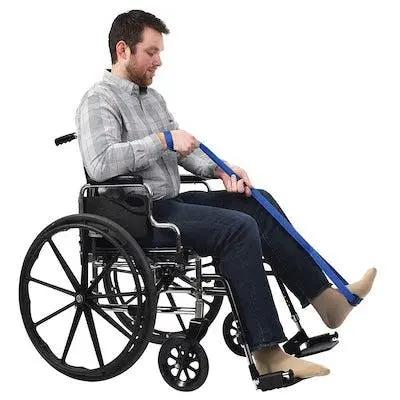
- Strengthening exercises include repeating muscular contractions until they get exhausted. Strengthening workouts enhance muscular tone and quality. This improves movement, gives you energy, and makes you feel good.
- Strong hip and leg muscles are required to lift the legs and walk, whereas strong arm muscles are required to do daily tasks. Strong abdomen and back muscles assist in maintaining proper posture and can alleviate discomfort caused by poor gait, bad posture, or the use of mobility aids.
Electrotherapy
Thermotherapy is used to relieve pain and spasms.
- They are Superficial heat (IR, wax bath) and, Deep heat (SWD, MWD, etc.).
- Electrical treatment is used to improve muscular strength and reduce discomfort. Example: TENS, EST, IFT.
Orthoses
- Patients with paraplegia can benefit from various orthoses.
- These include a crutch, walker, cane, lumbar brace, and wheelchair.
Yoga
- The mild stretching techniques seen in yoga practices are beneficial for many paraplegics and SCI survivors because they stretch underused muscles and stop atrophy.
- The breathing exercises included in this specific paraplegia exercise program can also benefit people who experience breathing difficulties as a result of brain or spinal cord injuries.
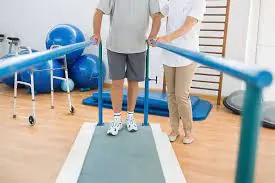
Proper gait training is crucial for achieving balance throughout rehabilitation programs. Gait training can be performed using the following methods:
- Pre-ambulation MAT Programme:
- Rolling, prone on elbow or hand, quadruped, pelvic tilting, establishing, and standing balance.
- Parallel bar progression.
- Advanced parallel bar activities.
- Assistive device: Cane, crutches, walker.
Lifting weights
- Weightlifting is a type of workout that enables paraplegics to actively improve their physical strength and health while preventing muscle atrophy.
- To prevent overusing muscles and reinjuring themselves, weightlifting should be done under a physical therapist’s supervision for SCI survivors and paraplegics.
Home program and ergonomics
- The patient should utilize a lumbosacral orthosis to support their back when traveling.
- The patient is instructed to do hot fomentation at home.
- The patient is instructed to lie in a prone posture for at least 15 minutes twice daily.
- The patient is taught proper sitting, standing, lying, and standing, laying techniques, as well as how to do household tasks correctly.
- The patient should relax and prevent forward bending to the greatest extent possible.
Aerobic exercise
Aerobic exercise strengthens your heart and lungs while improving your body’s ability to use oxygen. It also decreases exhaustion, boosts energy, improves sleep, helps you lose weight, and lifts your mood.
It is normally suggested to build up to three or four sessions each week, each lasting 15 to 60 minutes. Include a 5-minute warm-up (including stretching) before the exercise, followed by a 5 to 10-minute cool-down (stretching and slower activity).
Walking, stationary bicycling, water activities, and chair exercises are all wonderful options.
- Walking: Experts advocate walking based on your capacity, comfort, and safety. Even short, relaxing walks might be beneficial.
- Water aerobics: Aquatic (water) workouts including swimming offer ideal exercise conditions. Water counteracts gravity, allowing weakening limbs to move more freely. Water also helps to support the body, reducing tension on the hips, knees, and back.
- In addition to helping paraplegics get out of their chairs and stretch limbs that would otherwise be difficult to exercise, the water also supports the weight of the body. This kind of physical rehabilitation exercise requires adequate support and supervision.
- Aerobics while Seated: People can perform a variety of aerobic activities from the comfort of their chairs. This paraplegia exercise has the advantage of being easily performed from almost any place, so it’s a great way to stay active even if you can’t visit a spinal cord injury rehabilitation facility.
- Stationary biking: If mobility and balance are major concerns, consider chair exercises. They may give an excellent workout while also including strengthening and stretching routines. It is an excellent technique to increase fitness without placing strain on the hips, knees, and feet. It can be done in any weather, and balance is typically not a difficulty. Add resistance just when you are comfortable and have warmed up.
Preventive Measure for Paraplegia
Although paraplegia can occasionally be prevented, it can also occur randomly and in ways that are beyond your control. The following are the best things you can do to avoid paraplegia or lower your chance of getting it:
- As advised, put on safety gear, such as seat belts and other restraints. Restraints such as seat belts can prevent injuries that could result in paraplegia.
- Use caution when handling weapons. One of the most frequent causes of spinal cord injuries resulting in paraplegia is gunshot wounds. No matter what, you should always handle firearms with the utmost caution. Even when you’re positive they’re not loaded, act like they are. Guns should also be kept unloaded, out of children’s reach, and locked with a trigger lock. Weapons should also be kept in a separate, lockable storage area.
- To prevent falls, take safety measures. Employ safety gear, such as safety harnesses, when doing work on roofs or in other elevated spaces. Additionally, you ought to take precautions against falls at home, particularly on staircases and in restrooms. This can involve putting in handrails, utilizing non-slip shoes and flooring, and clearing tripping hazards off the stairs.
- Avoid misusing prescription medications, alcohol, or recreational drugs. These may impact your immune system’s capacity to combat infection. They may also raise your chance of getting hurt in car wrecks and falls.
FAQs
What does paraplegia mean to you?
Paraplegia is a partial or total paralysis of the lower half of the body, generally affecting both legs, caused by spinal cord injury or illness in the thoracic or lumbar area.
What causes paraplegia?
Paraplegia is often caused by an injury to the spinal cord or brain that prevents impulses from reaching the lower body. Paralysis occurs when the brain is unable to send impulses to the lower body. Accidents create a large number of paraplegic injuries.
What are the definitions of quadriplegia and paraplegia?
Quadriplegics or tetraplegics are people who have damaged the top section of their spinal cord. People with injuries below this threshold are referred to as paraplegics. People who have lower back injuries may have feeling and movement in their hips.
Who suffers from paraplegia?
Paraplegia is a type of paralysis that mostly affects your legs. This is often caused by nervous system injuries, particularly those to the spinal cord, although it can also occur as a result of a variety of medical disorders and diseases.
Can paraplegia be temporary?
Paralysis occurs when you are unable to move part or all of your body. It may be transitory or permanent, depending on the reason.
Is paraplegia life-threatening?
Because paraplegia is usually caused by severe damage to the spinal cord tissue and the associated inflammation, various nerve-related issues can and do arise. Autonomic dysreflexia is a potentially fatal medical problem that mostly affects paraplegic persons.
How long does paraplegia last?
Some persons can regain function up to 18 months following an accident. However, many patients will suffer a permanent loss of function, requiring long-term care.
What is a paraplegic’s diet?
Choose lean proteins, low-fat dairy products, fruits and vegetables, and whole grains. Instead of deep-fat frying, use olive or canola oil to pan-fry items. For extra cooking variation, try baking, boiling, braising, grilling, poaching, and steaming. Limit your intake of sugary, high-fat foods and beverages.
What’s the difference between paraplegia and paralysis?
Paralysis may be full or partial. One or both sides of the body might experience it. It can either be localized or widespread. Paraplegia refers to paralysis of the bottom half of the body, including both legs.
References
- Professional, C. C. M. (n.d.-k). Paraplegia. Cleveland Clinic. https://my.clevelandclinic.org/health/symptoms/23984-paraplegia
- Kandola, A. (2020, May 6). Everything you need to know about paraplegia. https://www.medicalnewstoday.com/articles/what-is-paraplegia
- Srakocic, S. (2021, May 3). Understanding paraplegia. Healthline. https://www.healthline.com/health/chronic-illness/paraplegia
- Spinal cord injury – Symptoms and causes – Mayo Clinic. (2023, October 12). Mayo Clinic. https://www.mayoclinic.org/diseases-conditions/spinal-cord-injury/symptoms-causes/syc-20377890
- Basu, S. (2022, February 2). Paraplegia: causes, symptoms and treatment. Netmeds. https://www.netmeds.com/health-library/post/paraplegia-causes-symptoms-and-treatment

